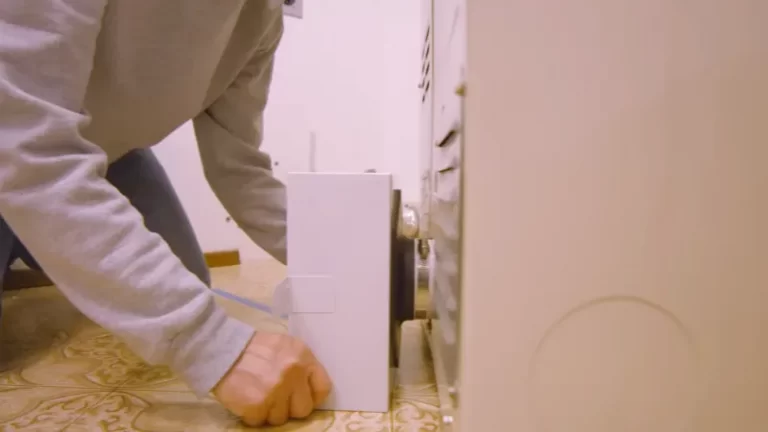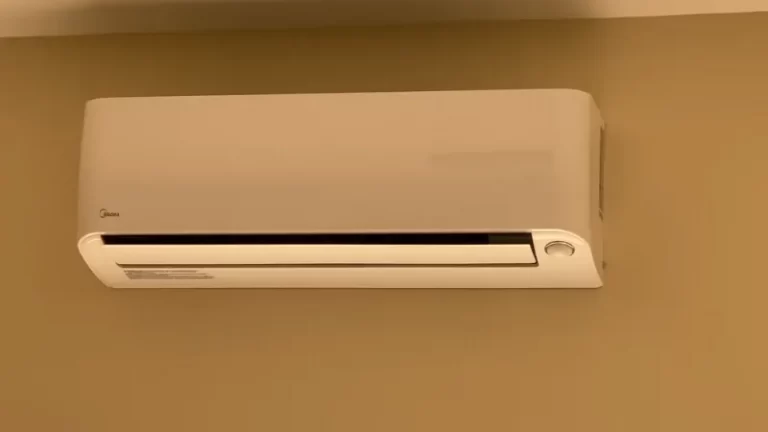Direct Connect Humidifier: The Ultimate Fix for Dry Indoor Air?
That portable humidifier in the corner of your room feels like a constant chore. You lug it to the sink, carefully fill the tank without spilling, and haul it back, only to repeat the entire process the next day. It’s a temporary patch for a persistent problem, and it often leaves you wondering if there’s a better way to combat the dry, stale air in your home.
The constant cycle of refilling is not just an inconvenience; it represents a flawed solution. Portable units struggle to maintain a consistent humidity level, often only affecting the immediate vicinity. This leaves the rest of your home to suffer from the damaging effects of dry air, from creaking wood floors to an increased susceptibility to seasonal illnesses.
What if you could achieve perfect, whole-home humidity without ever filling a water tank again? The solution is a direct connect humidifier, an integrated system that automates your home’s air quality, providing silent, efficient, and effortless comfort.
You'll Learn About
What Exactly Is a Direct Connect Humidifier?
A direct connect humidifier, more commonly known as a whole-house humidifier, is a system that plumbs directly into your home’s water supply. It physically attaches to the ductwork of your central heating and cooling system. This integration allows it to use the furnace’s fan to distribute water vapor evenly and efficiently to every room in your house.
Unlike their portable cousins that require daily refilling, these systems operate automatically. A device called a humidistat constantly monitors the relative humidity in your home. When the air becomes too dry, the humidistat signals the humidifier to open its water valve and add moisture to the warm air circulating through your ducts, maintaining your desired level of comfort without any manual intervention.
The Hidden Dangers of Inconsistent Home Humidity
The problems caused by dry air extend far beyond the minor annoyance of static shock or chapped lips. Persistently low humidity can have significant and costly consequences for both your health and your home’s structural integrity. It quietly wreaks havoc, causing damage that often goes unnoticed until it’s severe.
Your home itself is vulnerable. Hardwood floors, wooden furniture, cabinetry, and even musical instruments like pianos and guitars can shrink, warp, and crack as dry air leaches moisture from the wood. This damage is often irreversible. Furthermore, dry air can make your home feel colder than it is, leading you to turn up the thermostat and increase your heating bills.
From a health perspective, overly dry air irritates the sensitive membranes in your nasal passages and throat, making you more susceptible to colds, the flu, and other respiratory infections. It can also worsen symptoms for those with asthma and allergies and contribute to dry skin, eczema, and sinus headaches.
Types of Whole-House Direct Connect Humidifiers
Choosing the right direct connect humidifier depends on your home’s size, your furnace type, your climate, and your budget. The three main types are bypass, fan-powered, and steam, each with distinct advantages and operational methods. Understanding these differences is key to making an informed decision.
Bypass Humidifiers
Bypass humidifiers are the most common and generally the most affordable type of whole-house system. They work by diverting a portion of the warm air from the furnace’s supply plenum through a water panel inside the humidifier. As the air passes through this saturated panel, it picks up moisture and is then returned to the airflow for distribution throughout the home.
These units are known for their energy efficiency and quiet operation because they rely on the furnace’s blower motor to move the air. However, their effectiveness is tied to the furnace’s runtime, and they do require a bypass duct to be installed, which takes up additional space.
Fan-Powered Humidifiers
Fan-powered humidifiers operate on a similar principle to bypass models but with a key difference: they include their own internal fan. This fan actively pulls air through the water panel, allowing the unit to generate more humidity than a comparable bypass unit. This makes them a great choice for larger homes or households that require higher humidity levels.
Because they don’t require a bypass duct, fan-powered units offer a more flexible and compact installation. The trade-off is slightly higher electricity consumption due to the internal fan and a higher upfront cost compared to bypass models.
Steam Humidifiers
For the most powerful and precise humidity control, steam humidifiers are the top-tier option. These units operate independently of the furnace’s heat by using an electric current to boil water, creating steam. This sterile steam is then injected directly into the airstream for distribution.
Steam models can produce a significant amount of moisture very quickly, making them ideal for very large homes, arid climates, or situations where precise humidity is critical. While they are the most effective, they are also the most expensive to purchase and operate and typically have a more complex installation process.
To help clarify the differences, here is a direct comparison of the three main types:
| Feature | Bypass Humidifier | Fan-Powered Humidifier | Steam Humidifier |
|---|---|---|---|
| Installation Complexity | Moderate (Requires bypass duct) | Moderate (No bypass duct) | High (Requires power and water) |
| Upfront Cost | Low | Medium | High |
| Operating Cost | Low (Uses furnace fan) | Medium (Uses own fan) | High (Heats water to steam) |
| Humidity Output | Good | Better | Best |
| Best For | Most homes in moderate climates | Larger homes or those needing more moisture | Large homes, arid climates, precise control |
The Installation Process: What to Expect
While some seasoned DIY enthusiasts may tackle the installation, for most homeowners, installing a whole-house humidifier is a job best left to a qualified HVAC professional. The process involves cutting into your home’s ductwork, tapping into plumbing lines, and making electrical connections to the furnace control board. An improper installation can lead to leaks, inefficient operation, or even damage to your HVAC system.
An HVAC technician will typically follow these steps: select the optimal location on the supply or return air plenum, make precise cuts into the ductwork for mounting the unit, and securely fasten it in place. They will then tap into a nearby cold or hot water pipe, often using a self-piercing saddle valve, and run a small-diameter water line to the humidifier.
Finally, they will connect a drain line to carry away excess water and wire the humidistat into the furnace’s control system. This ensures the humidifier only runs when the furnace is operating, preventing cold, moist air from being pumped into your home.

Long-Term Maintenance: The Key to Clean, Healthy Air
One of the biggest selling points of a direct connect humidifier is its low-maintenance nature, but low-maintenance does not mean no-maintenance. Performing simple annual tasks is crucial to ensure the unit operates efficiently and prevents the growth of mold or bacteria, which could then be distributed throughout your home.
Forgetting these steps can lead to clogs, leaks, and poor performance. Proper care ensures your investment continues to pay dividends in comfort and health for years to come.
Annual Water Panel/Pad Replacement
The most important maintenance task is replacing the humidifier’s water panel (also called an evaporator pad or filter) at least once a year, typically before the heating season begins. Over time, this panel becomes clogged with mineral deposits and scale from the water. A clogged panel cannot absorb water effectively, drastically reducing the humidifier’s output.
Replacing the panel is a simple process. First, turn off the power to your furnace. Then, remove the cover of the humidifier, slide out the old panel frame, discard the old panel, and insert the new one, making sure it’s correctly oriented. Slide the frame back in, replace the cover, and restore power.
Cleaning the Water Orifice and Solenoid Valve
A less-discussed but critical maintenance point is the water supply system itself. The small orifice that feeds water into the humidifier can become blocked by the same mineral deposits that clog the water panel. This blockage can starve the unit of water, rendering it useless.
Annually, when changing the panel, it’s wise to disconnect the water supply line and inspect the small inline filter and the solenoid valve’s inlet. Gently cleaning any visible debris with a pin or small wire can prevent a service call down the line and ensure a steady supply of water all winter long.
Setting the Humidistat for the Season
Your humidistat should be adjusted based on the outdoor temperature to prevent condensation on your windows. As the outside air gets colder, the inside surface of your windows gets colder too. If the indoor humidity is too high, this moisture will condense on the cold glass, which can lead to mold growth and damage to window sills.
A good rule of thumb is to aim for an indoor humidity level between 30% and 50%. On a frigid day, you may need to set it closer to 30%, while on a milder winter day, you might be comfortable at 40% or higher. Many modern humidistats come with an outdoor temperature sensor to make these adjustments automatically.
Is a Direct Connect Humidifier Right for Your Home?
Investing in a whole-house humidifier is a significant upgrade to your home’s comfort system. The benefits are clear: you achieve consistent, healthy humidity levels throughout your entire home, protect valuable wood furnishings and floors, and enjoy the sheer convenience of an automated system. The core benefit is that you get a true stand-alone humidifier with a water line, which eliminates the daily chore of filling tanks.
The upfront cost for the unit and professional installation can be a consideration. However, when weighed against the long-term benefits of improved health, protection of your home’s assets, and enhanced comfort, many homeowners find it to be a worthwhile investment. It’s a proactive step toward better indoor air quality.
It’s also important to remember that different parts of a home have different air quality needs. While a direct connect humidifier adds moisture, ensuring your enclosed spaces are dry requires a different approach. For example, a quality dehumidifier for your screened porch can prevent moisture damage in those specific areas. Diligent maintenance prevents most issues, but if you ever notice strange odors from any HVAC appliance, like a dehumidifier that smells like burning plastic, it’s critical to shut it down and investigate the cause immediately.
Conclusion: The Ultimate Upgrade for Home Comfort
A direct connect humidifier is more than just a convenience; it is a powerful tool for maintaining a healthy and comfortable indoor environment. By seamlessly integrating with your HVAC system, it provides a stable, whole-home solution to the pervasive problems of dry air.
From protecting your family’s health to preserving the very structure of your home and its contents, the benefits are substantial. If you are tired of the endless cycle of portable humidifiers and ready for a permanent solution, consulting with an HVAC professional about a direct connect humidifier is the next logical step toward a more comfortable and healthier home.


